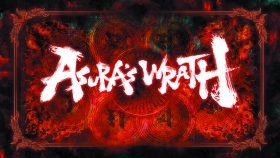
In Defense of Asura’s Wrath - Why I Love This Controversial Game
Asura’s Wrath is one of my favourite games of the seventh generation of consoles, and one that I find criminally underrated for a series of reasons. For a game so heavily focused on Quick-Time events, it was released during an era of disdain for them in any form, and while it did struggle to be unique through its gameplay, I found its setting and storytelling to more than make up for this.
The primary setting takes many inspirations from Buddhist and Hindu stories and beliefs, with many cybernetic and futuristic elements interspersed throughout, which is a bizarre mix but works surprisingly well to create a very unique-feeling world. Many of its characters are practically cyborgs, including the titular Asura, who has not only cybernetic arms but also a giant Mantra generator in his back — Mantra being the godly energy utilised by the gods of Asura’s Wrath. This is helped by the utterly gorgeous art style, utilising cel-shading to achieve a more traditional anime-esque look, which is solidified even more in Episode 11.5, which was animated by Studio 4°C. To clarify, Asura’s Wrath was formatted in an episodic structure, along with having credits for each episode, making its format feel like more of a TV show rather than a typical game, which lends to its more cinematic nature.

The gameplay was a point of contention for many people, but honestly, I blatantly ignore most of its flaws (which do exist) because the sheer spectacle on show is insane. There are three main styles of gameplay here: beat ‘em up, rail-shooter, and a Quick-Time event system, interspersed throughout the game in a variety of ways. They’re each pretty simple, but they work together to create an insanely exciting and intense story, which is improved further by the characters and the music. It also met some heavy criticism due to its DLC practices, practically locking the entire final act of the story behind a paid DLC. And due to this, many people missed out on the game's true conclusion and, quite frankly, my favourite final boss of the seventh generation.
The story follows the Eight Guardian Generals: demigods aiming to defeat an army of beasts known as the Gohma, who are attacking the planet of Gaea. Of these demigods, we follow Asura — the god of wrath — who is betrayed by the other seven demigods who are responsible for killing his wife, and kidnapping his daughter. The rest of the game consists of an absolutely insane revenge trip, with Asura fighting through hordes of Gohma and the Shinkoku army to kill each of the Seven Deities alongside rescuing his daughter; this leads to some of the most spectacular battles I have personally experienced. Each of the Deities is incredibly well written and is incredibly fun to hate, yet it still manages to tie in some surprisingly heartfelt moments, carried even further by its beautiful soundtrack, composed by Chikayo Fukuda, known for her work on the Naruto: Ultimate Ninja Storm and .hack series.

I played Asura’s Wrath on a whim, and I am so incredibly glad I did. Despite its quite frankly abysmal DLC practices, I can’t recommend it enough. If you’re a fan of the insane amounts of spectacle that shounen anime provides, Asura’s Wrath is the game for you.








COMMENTS